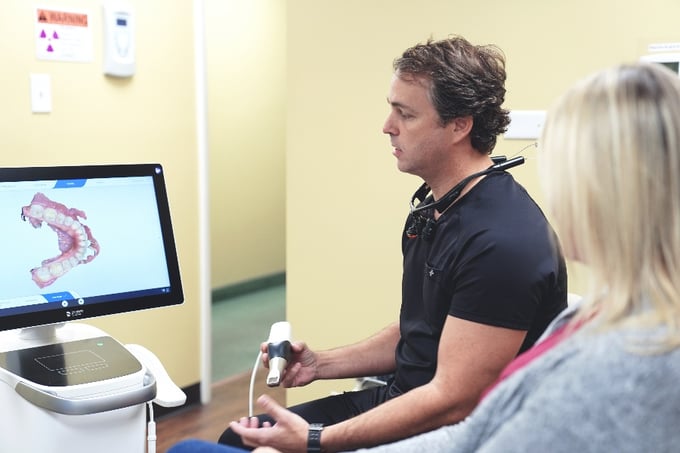4 tips for posting dental insurance payments to your software


As you move through the dental billing process, it’s important you execute each step accurately and efficiently. One of the last steps of the dental billing process is posting your insurance claim payments to your practice management software. This step completes the life-cycle of the insurance claim and helps you keep track of every payment.
Even though this step seems self-explanatory, knowing the best practices for each step of the dental billing process can improve the financial health of your dental practice.
Dental ClaimSupport is a billing service that posts insurance payments every day for dental teams. Through ten years of this experience, we know some easy and helpful ways to help your posting be accurate, efficient, and organized.
In this article, we will share 4 tips for posting dental insurance payments to your practice management software.
These tips range from how often you should be posting, to how you need to simultaneously reconcile your posting with your bank account, to ensure the actual payments were also deposited into your bank account.
Let’s dive into tips for posting dental insurance claim payments to your software.
1. Post dental insurance payments within 24 hours of receiving the deposit
This seems obvious, but you’d be surprised by how many dental teams put off posting payments into their practice management software.
Once the team sees the money deposited into the bank account, they might think, “We got paid! That claim is checked off the list!”
But you’ll need to post the payment to your practice management software as well. Doing so keeps all of your information properly documented and reported. It allows you to let the patients know what has been paid and what their financial responsibility may or may not be.
It also completes the life-cycle of a claim and you will be able to close it out, removing it from the insurance aging report. Patient payments also need to be posted promptly so that your patient bills and cash flow numbers are accurate and lessen the possibility of insufficient funds (aka, bounced checks).
Plus, posting the claim payment applies a credit to the patient’s ledger. This either leaves a balance owed by the patient that needs to be collected, or hopefully creates a “zero-balance”.
A “zero-balance” system is ideal for a clean claims process.
Why should I post claim payments to the software so quickly after I receive it?
Our dental billing experts recommend your office post checks within a day of them arriving in the mail and/or being directly deposited into your bank account in order to keep cash flowing.
Assuming you have patients every day, and you’re sending claims every day, you should be receiving payments from insurance carriers most days, thus posting daily payments.
Depending on when the mail comes in and how many EFTs (Electronic Funds Transfer) you receive, your office should reconcile these payments daily. If you aren’t doing this daily, it should be at least a few days of the week.
Creating a routine and setting aside time for posting payments is helpful when completing this task. We talked to a former office manager who said he liked posting payments at the same time every day.
Every office has its own system, but dedicating at least a few days a week to post payments that come in that same week is important to a healthy practice cash flow and organization.

2. Learn the tools that optimize efficiency: the bulk payment software feature
Posting bulk insurance payments (multiple payments on one bulk check from the carrier) can be a tedious task. We recommend you learn how to set up your software to handle these “Bulk Insurance Payments.”
When you properly set up each patient’s insurance plan, you are able to utilize the Bulk Payment Feature in most practice management software programs.
Each software does this a bit differently, but generally speaking, you can enter your bulk insurance carrier check with the total check dollar amount and check number.
You then click a button and load all outstanding insurance claims that belong to that common carrier. Once the claims for the patients that belong to the bulk insurance check are loaded and patients who are not on the bulk check are removed (with a simple click), you can easily apply any insurance write-offs, notes, and the actual payments for that particular claim (line item included).
Most software programs will also allow you to easily look at the account, patient, insurance, or transaction/ledger screen while bulk posting.
There is usually a setting to prompt you for secondary claims. If you are unfamiliar with posting a bulk insurance check in your software, we highly recommend you contact your software support team to learn about this feature, how to set it up, and the advantages it will provide for your practice.
Take advantage of technology to make the posting process easier
There are also some other tools you can use to make your posting process easier and more efficient.
Even just utilizing dual monitors can make a huge impact on your efficiency. You can have your EFT’s/EOB’s that you scanned into the file by date on one monitor and your posting window on the other. This will drastically decrease the amount of time it takes to post.
Here are some other tools to take advantage of:
- Use your computer calculator to check any math you may perform.
- Look into practice management software training so that you are making the most of your software
- Look into clearinghouse training for the same reason
- Take a quarterly or semi-annual CE course on insurance billing - especially with any annual CDT changes.
There are a lot of resources your team can take advantage of in order to move through the billing process - specifically posting payments - in a smoother manner.
3. Post your insurance payments and insurance write-offs by “Line Item” and by procedure and provider
You should always post the payments and adjustments by procedure and provider. If that provider did the treatment and there is a write-off, the payment and write-off are posted to the procedure and the provider of the service. You should also scan your EOB’s and save your EFT’s/ERA’s into a secure file organized by “date posted.”
When posting your insurance payments you should be in a quiet area with no distractions that could interrupt your concentration and focus on the details listed on the EOB/ERA or EFT.
It is especially vital if you pay any employee or associate based on the net collections (after the discounts or PPO write-offs).
It is very difficult to track individual collection amounts manually and most practice management software programs can be set up for associate tracking. If you are unsure how your software is set up to handle your provider production/adjustment or collections, contact your software support team for directions.

4. Balance your posted payments with your bank account deposits daily
Another facet of posting payments to your practice management software is reconciling those payments with what is deposited into your bank account.
These numbers need to match. Whatever amount that the insurance company has paid you, is the same across the board in your bank account and software. We recommend your team balances your posted payments and your bank deposits daily, or 24 hours within receiving payment.
Here’s another small caveat: When posting large payments (upwards of $25k), balance the payment with your bank account halfway through. Because it’s such a large sum, you want to make sure it’s all correct.
What if the payments don’t match in my dental software and bank account?
Don’t fret! You can typically go back through the life of the claim within your software and see where a discrepancy is.
Run your daily deposit report broken down by payment type and look for the error.
PRO-TIP: If the dollar amount that is off is evenly divisible by 9, then you more than likely transposed a number! If you are still off, the first place to check is the credit card merchant batch totals and then go through the other payment types daily.
If the payment you’ve posted is lower than your software estimated, consider reviewing the following:
- The patient’s insurance plan - max, deductible, percentages, blue book/payment
- Entries that are incorrect
- Fee schedules that may have changed for the plan
- Exclusions
After reviewing these things, you’ll be able to update any information that was missing and/or incorrect.
Ready to learn more about improving your dental billing process?
Posting insurance claim payments is only a piece of the dental billing puzzle. It’s an important piece, and the last step to the life cycle of a claim.
That’s why it’s so crucial that this task is completed accurately and efficiently: it signifies that you’ve been paid!
You now know some valuable best practices for posting insurance payments to your software. That doesn’t take away from the fact that this task is tedious and time-consuming. If you need some extra help with your claims process, Dental ClaimSupport is a great resource for those insurance billing tasks such as posting payments.
To continue learning ways to streamline your dental billing process, visit our Learning Center.
Related Posts
Dental revenue resources from Dental Claim Support

